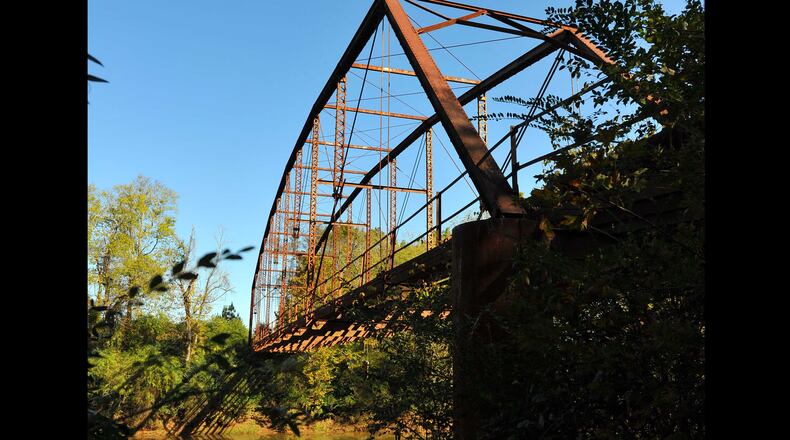Rogers Bridge — the Chattahoochee River-spanning, Gwinnett-to-Fulton connection that’s lain dormant since the ‘70s — may finally be reborn as a gateway for pedestrians and cyclists.
But it won’t be simple.
The city of Duluth, the city of Johns Creek, Gwinnett County, Fulton County, the National Park Service and the Georgia Department of Transportation are all involved in the project, which is still in its design phase. That’s not stopping officials, however, from dreaming of a big future for the 318-foot bridge.
“This is what the population is really requiring at this time,” Duluth parks director Kathy Marelle said.
Specifics are being kept under wraps, but design firms are putting the final touches on proposals for the project, which would turn the aged bridge into a pedestrian- and bike-friendly connection between park land on either side of the Chattahoochee — or replace it with a completely new structure.
Officials from both Duluth and Johns Creek have to approve them before they're revealed, Marelle said, but potential designs are expected to be shown at a pair of public meetings later this month.
The first will be from 6 to 8 p.m. March 28 at Johns Creek City Hall, 12000 Findley Road. The second will be from 4:30 to 7 p.m. March 30 at Duluth City Hall, 3167 Main St.
Such a project has been a topic of discussion throughout the years, but Marelle said the idea gained traction last year when Johns Creek purchased the 133-acre plot known as the Cauley Creek property, which abuts the Chattahoochee River near Rogers Bridge.
Marelle didn’t have a full price tag for the potential project, but said the design phase cost $500,000. Of that money, $400,000 came from a federal grant and the remainder was divided evenly among the cities and counties involved.
Marelle said officials hope to have the project fully completed within four years — “five at the most.”
“Everybody, I think, has become very excited as to the benefits of what this could do for the residents,” Marelle said.
About the Author
Keep Reading
The Latest
Featured


